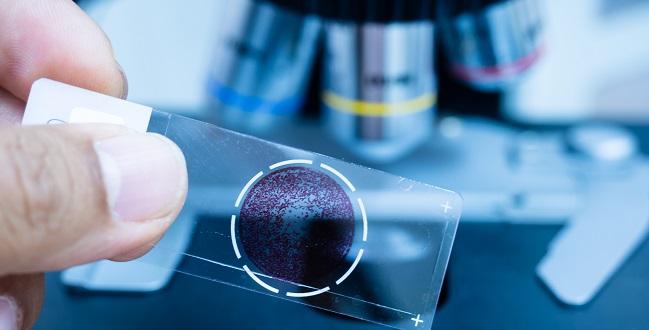Myocarditis Is Rare in COVID-19 Deaths, International Autopsy Data Suggest
The findings, from 277 autopsies, refute some early concerns but don’t rule out other heart effects of the virus pushing up troponin.

Myocarditis is an infrequent finding at autopsy in people who die from COVID-19, according to a multinational, retrospective analysis.
Early, small postmortem reports from Wuhan, China, first raised a red flag that confirmed cases of fulminant myocarditis were being seen. Months later, a controversial study found that 78% of recovered middle-age adults—some with mild or no symptoms—had ongoing cardiac involvement weeks or even months after the infection as documented on cardiac magnetic resonance (CMR). Additionally, in a small analysis of 26 college competitive athletes who’d tested positive for COVID-19, four had CMR imaging evidence of myocarditis and eight had signs of prior myocardial injury.

“In talking to a lot of my colleagues in pathology who were doing autopsies and seeing these hearts, we weren't seeing anything like that,” said Marc K. Halushka, MD, PhD (Johns Hopkins University, School of Medicine, Baltimore, MD). “It made us concerned, because the message out there seemed to be off about the frequency of myocarditis. So, we started looking at the autopsy data that were out there, which on their own, were too small to draw conclusions.”
This doesn't mean that patients aren't having heart problems and that the imaging studies aren't showing something, because they are and the troponin levels are elevated. That's real, but it’s not myocarditis. Marc K. Halushka
For the study, published online last week in Cardiovascular Pathology, Halushka and Richard S. Vander Heide, MD, PhD (Louisiana State University Health Sciences Center, New Orleans), collected data from 277 autopsy cases reported in 22 published papers of COVID-19 postmortem exams in 10 countries. While 20 myocarditis cases were included in the reports, Halushka and Vander Heide found that in 16 cases, the evidence to support it was questionable. In fact, most of the cases were judged unlikely to have been functionally significant, pushing the true prevalence of myocarditis from 7.2% to under 2%.
“I think the big takeaway message is that this doesn't mean that patients aren't having heart problems and that the imaging studies aren't showing something, because they are and the troponin levels are elevated. That's real, but it’s not myocarditis,” Halushka said.
Commenting on the study for TCTMD, Leslie T. Cooper Jr, MD (Mayo Clinic, Jacksonville, FL), agreed with that assessment.
“There may be some myocarditis in a small percentage of people—we don’t really know—but that's not the dominant mechanism of cardiac injury,” he said. However, Cooper pointed out that given the nature of the study design, it is possible that sampling errors or inconsistent sampling practices across the studies may have contributed to an underestimate of the myocarditis rate.
“This is an important paper about mechanisms of disease in general, despite its limitations,” Cooper said. While relevant to the older population of people who die of COVID-19, “it's not relevant to a 19- or 20-year-old college student with regard to athlete participation,” he added.
Better, Clearer Interpretation and Documentation Needed
In looking across the studies, Halushka and Vander Heide found that in nearly half of all cases, there was at least one acute cardiovascular histopathologic finding that was considered potentially related to COVID-19. These included macro- or microvascular thrombi, inflammation, or intraluminal megakaryocytes. These findings were coupled with what the authors describe as “strong biases in observations and the need for more consistency in reporting.”
There may be some myocarditis in a small percentage of people—we don’t really know—but that's not the dominant mechanism of cardiac injury. Leslie T. Cooper Jr
According to Halushka, the low rate of myocarditis in the study is in line with other severe coronaviruses outbreaks like SARS and MERS. The latter was associated with a single MRI-documented case of myocarditis, while SARS was linked to none.
Halushka and Vander Heide say in their paper that it’s incumbent on radiologists “to better interpret the meaning of cardiac MRI changes and other study data in light of this low incidence of histopathologic myocarditis.”
To TCTMD, Halushka said it’s likely that the concerning early reports about myocarditis resulted in attempts by pathologists to validate the observations in COVID-19 patients, which may have led to a missed opportunity to look for other, potentially more important clues about the virus. In their paper, they encourage use of a checklist for pathologists to document findings such as microvascular thrombi and megakaryocytes, both of which have recently been recognized as being widespread in COVID-19 patients at autopsy.
“The checklist, hopefully, is something that people will use and begin to look harder at the heart material that they find,” Halushka said. “I think some of these findings are subtle, and unless you're looking for them, you're not going to see them.” With widespread use of the checklist and documentation, “maybe there is a story there,” he added.
“I think the other problem is that there is just no clear-cut ‘this is what a COVID heart looks like’ scenario,” Halushka noted. “It would be nice, but that doesn’t seem to be true.”
Cooper said while there is still much to be learned in the coming months and years about COVID-19’s effects on the heart in people of all ages, some of which may have to come from modeling estimates, “we do need to be systematic in this disease specifically, and in others, in our use of pathology and in our description of the vessels and the way we sample the heart.”
L.A. McKeown is a Senior Medical Journalist for TCTMD, the Section Editor of CV Team Forum, and Senior Medical…
Read Full BioSources
Halushka MK, Vander Heide RS. Myocarditis is rare in COVID-19 autopsies: cardiovascular findings across 277 postmortem examinations. Cardiovasc Pathol. 2020;Epub ahead of print.
Disclosures
- Halushka, Vander Heide, and Cooper report no relevant conflicts of interest.


Comments